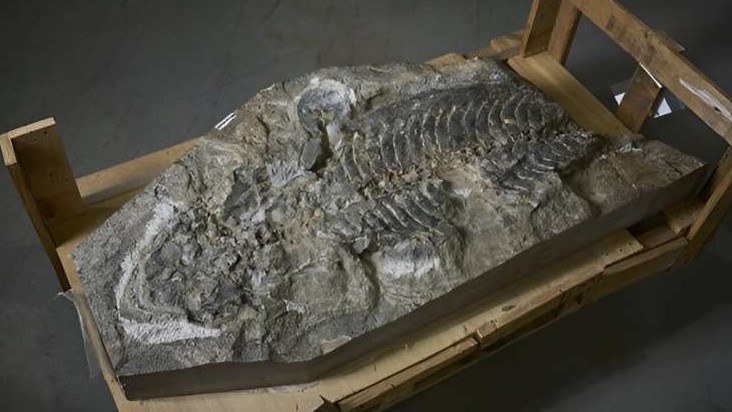240 million-year-old fossil of salamander-like creature with 'gnarly teeth' unearthed in rocks for garden wall
A retired chicken farmer found the rocks in the mid-1990s and donated it to the Australian Museum, where researchers have now named the newfound species Arenaerpeton supinatus.
Scientists have identified a 240 million-year-old giant-salamander-like creature that was first unearthed decades ago in rocks intended for a garden wall in Australia. The species, Arenaerpeton supinatus — meaning "supine sand creeper" — was an estimated 4 feet (1.2 meters) long and inhabited rivers in what is now the Sydney Basin during the Triassic period (251.9 million to 201.3 million years ago), according to a study published Aug. 3 in the Journal of Vertebrate Paleontology.
"This fossil is a unique example of a group of extinct animals known as the temnospondyls, which lived before and during the time of the dinosaurs," study lead author Lachlan Hart, a doctoral student in vertebrate paleontology at the University of New South Wales and the Australian Museum, said in a statement.
The amphibian's remains are exceptionally well preserved and even reveal imprints of the creature's skin. "We don't often find skeletons with the head and body still attached, and the soft tissue preservation is an even rarer occurrence," Hart said.
Related: 462 million-year-old fossilized eyes and brains uncovered in 'secret' Welsh fossil site
A retired chicken farmer discovered the fossil 30 years ago in rocks that were cut from a quarry and intended for a retaining garden wall. The retiree donated the relic to the Australian Museum.
The fossil creature was a look-alike of today's Chinese giant salamander (Andrias davidianus). The newly named amphibian is larger than closely related species that lived at the same time, but temnospondyls inflated after A. supinatus went extinct. "The last of the temnospondyls were in Australia 120 million years after Arenaerpeton, and some grew to massive sizes [up to 20 feet (6 m)]," Hart said. "The fossil record of temnospondyls spans across two mass extinction events, so perhaps this evolution of increased size aided in their longevity."
The creature's ribs and the outlines of its skin suggest it was "considerably more heavyset than its living descendants," which may include modern amphibians (Lissamphibia), Hart added. "It also had some pretty gnarly teeth, including a pair of fang-like tusks on the roof of its mouth."
Get the world’s most fascinating discoveries delivered straight to your inbox.
A. supinatus likely used these tusks to stab and shred its prey, which may have included ancient ray-finned fish, according to the researchers.

Sascha is a U.K.-based staff writer at Live Science. She holds a bachelor’s degree in biology from the University of Southampton in England and a master’s degree in science communication from Imperial College London. Her work has appeared in The Guardian and the health website Zoe. Besides writing, she enjoys playing tennis, bread-making and browsing second-hand shops for hidden gems.




